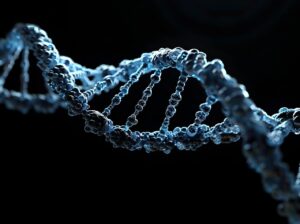
A recent study has discovered cellular pathways and genes previously unlinked to Alzheimer’s. Alzheimer’s disease may arise as a result of pathways related to DNA repair and other cellular processes.
Alzheimer’s is a progressive neurodegenerative disorder primarily affecting older adults, characterized by cognitive decline and memory that interferes with the daily lives of a person. Despite years of research, scientists have yet to discover the precise cause and treatment of this cruel disease.
Researchers believe sticky protein clusters known as amyloid plaques, which accumulate in the brain and harm nerve cells, are the cause of Alzheimer’s. Although research has led to the development of some drugs to eliminate these plaques, these drugs have not slowed the progression of the disease.
In an attempt to develop more effective treatments, researchers are also looking at other possible causes of Alzheimer’s. Through extensive data analysis, researchers at MIT and Harvard Medical School have found novel approaches to either prevent or treat the illness.
The research uncovered genes and biological pathways, including one related to DNA repair, that have never before been connected to Alzheimer’s. Given that many medications developed for Alzheimer’s up till now have not performed as well as expected, identifying new drug targets is essential.
The findings were published in Nature Communications [1].
About the Research
The complexity of Alzheimer’s disease has made it challenging to create effective medications, necessitating a more comprehensive approach from experts.
Researchers from Harvard and MIT discovered several cellular pathways that may be involved in neurodegeneration by analyzing data from fruit flies and humans. They were able to identify other pathways that might be involved in the onset of Alzheimer’s as a result.
Using fruit flies as a model, researchers investigated other factors in Alzheimer’s. They examined the effects of systematically inhibiting almost all conserved genes in fly neurons on neurodegeneration. As a result, they discovered over 200 genes that accelerate the process.
Some of these genes, like those involved in amyloid protein formation (the hallmark of Alzheimer’s), were already known to be connected to neurodegeneration.
To identify the links between genes that may be engaged in the same cellular processes, the researchers employed sophisticated network algorithms. They examined the connection between these genes and neurodegeneration by combining the fruit fly data with other datasets, including genetic data from autopsy tissue of Alzheimer’s patients.
Their first stage of investigation revealed that several genes detected in the fruit fly study also declined with age in humans, indicating their role in human neurodegeneration.
Network Analysis
In the following section of their investigation, researchers examined additional data relevant to Alzheimer’s disease, including eQTL (expression quantitative trait locus) data, which illustrates the impact of various gene variations on protein production. They discovered networks linking particular genes to Alzheimer’s disease using advanced algorithms.
One of the two paths they examined involved RNA modification, which had not previously been linked to the illness. The study discovered that neurons are more susceptible to the toxic Tau tangles observed in Alzheimer’s patients when particular genes in this pathway (MEPCE and HNRNPA2B1) are absent. Experiments on human neurons derived from stem cells and fruit flies verified this.
The researchers also discovered a second pathway related to DNA repair. It involves NOTCH1 and CSNK2A1, two genes that were previously associated with Alzheimer’s disease but not with DNA damage repair. The primary function of these genes is to regulate cell growth.
Researchers discovered that the absence of these genes leads to the accumulation of damaged DNA in cells, resulting in neurodegeneration. The discovery of these genes as potential new targets has prompted researchers to develop novel treatments that may aid in neuronal protection.
Using neurons produced from the stem cells of those with Alzheimer’s, researchers are testing potential medications.
Alzheimer’s Research Association is a non-profit organization dedicated to helping caregivers of Alzheimer’s disease and dementia. We provide the latest information and news about the illness and helpful tips to help caregivers cope with their daily caregiving challenges. We realize the most important thing that a caregiver needs is financial assistance. Therefore, we provide grants to caregivers to ease their financial burden. Caregivers can apply for grants here: Alzheimer’s Grant Application.
You can also help caregivers in their endeavor by donating as much as possible: Donation To Alzheimer’s Research Associations.
References
- Leventhal, M.J., Zanella, C.A., Kang, B., Peng, J., Gritsch, D., Liao, Z., Bukhari, H., Wang, T., Pao, P.C., Danquah, S. and Benetatos, J., 2025. An integrative systems-biology approach defines mechanisms of Alzheimer’s disease neurodegeneration. Nature Communications, 16(1), pp.1-21.
- Malewar, A. Potential new targets found for Alzheimer’s drugs. Tech Explorist. https://www.techexplorist.com/potential-new-targets-found-alzheimers-drugs/99487/. Posted Online: 20th May, 2025. Accessed: 16th June, 2025.
- Trafton, A. Scientists discover potential new targets for Alzheimer’s drugs. MIT News. https://news.mit.edu/2025/scientists-discover-potential-new-targets-alzheimers-drugs-0520. Posted Online: 20th May, 2025. Accessed: 16th June, 2025.
- Multi-Omic Study Reveals Non-Amyloid Drug Targets in Alzheimer’s Disease. Inside Precision Medicine. https://www.insideprecisionmedicine.com/topics/patient-care/multi-omic-study-reveals-non-amyloid-drug-targets-in-alzheimers-disease/. Posted Online: 22nd May, 2025. Accessed: 16th June, 2025.



